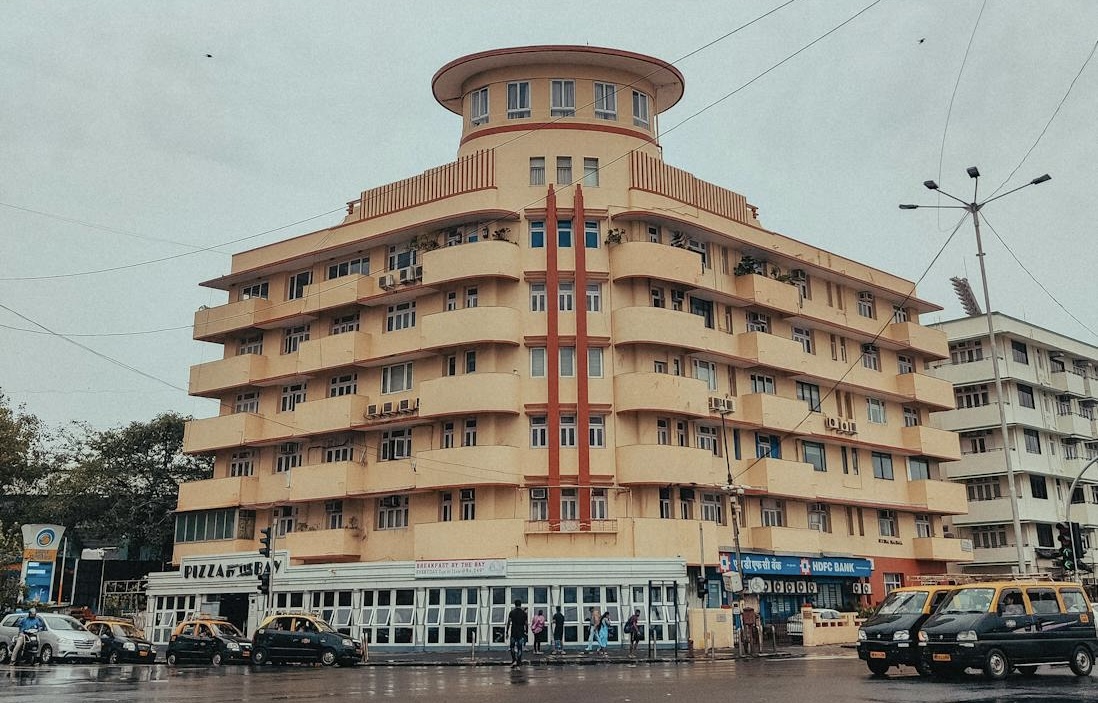Mumbai, originally a collection of seven islands known as Bom Bahia, was under Portuguese control until 1661. That year, the islands were gifted to King Charles II of England as part of the dowry in his marriage to Princess Catherine of Braganza. The Portuguese had initially aimed to convert the local population and use the islands as a port for their thriving spice trade.
In 1668, the British Crown transferred control of these islands to the East India Company for a nominal fee, sparking a transformation that would turn Bombay into a crucial commercial port and trading center. The city soon became a magnet for entrepreneurs from across the Indian subcontinent, drawn by the flourishing trade in cotton, opium, and spices, which infused the city with wealth and vibrancy.
As Bombay grew, the demand for housing led to extensive land reclamation. This transformed the city from its original seven islands into a unified landscape. By the early 20th century, Bombay underwent a remarkable cultural and social transformation, reflected in its architecture through the emergence of Art Deco.
The Arrival of Art Deco in Mumbai
Art Deco first became known in India through Bombay, which was mainly thanks to visionary Indian leaders, merchants, and entrepreneurs who embraced modern aesthetics. This architectural style signalled a new appreciation for contemporary living and set the stage for a unique blend of Indian and Western aesthetics. While traditional Indian architecture emphasized ornamentation, Art Deco in Mumbai adopted a more minimalist, geometric approach.
As the style gained traction, it found its way into various structures, from cinemas and social clubs to schools and hospitals. Indian architects, many of whom trained locally or abroad, began incorporating Art Deco into their designs. The 1937 Ideal Home Exhibition organized by the Indian Institute of Architects at Town Hall introduced the public to new architectural styles and materials, such as reinforced cement concrete (RCC), making the movement more visible throughout the country.
The distinctive Indian interpretation of Art Deco, often referred to as Bombay Deco or Indo Deco, became particularly prominent in neighbourhoods like Dadar and Matunga. This evolution was not merely an imitation of Western styles; it reflected Indian aspirations and lifestyles, with buildings showcasing vibrant colors, intricate patterns, and unique designs.
The Backbay Reclamation and Art Deco Precinct
Following World War I, the need for more housing led to significant land reclamation projects, notably the Backbay Reclamation Scheme initiated in 1920. This project, completed in 1929, created 439.6 acres of new land, paving the way for the development of the Art Deco Precinct. This area stretches from Oval Maidan to Marine Drive, which until today features a harmonious blend of architectural styles.
To maintain a cohesive urban environment, strict regulations were implemented governing building designs, heights, and materials. This careful planning resulted in a unique skyline and a unified aesthetic. Notable residential buildings, such as Shiv Shanti Bhuvan and Rajjab Mahal, displayed decorative surfaces that embraced bold colours and intricate details.
Architectural lettering also became an integral aspect of building façades, with creative signs reflecting the changing political climate—names like Empress Court gradually gave way to Bharatiya Bhavan, symbolizing a shift towards national identity.
The Rise of Art Deco Cinemas
The 1930s marked the golden age of cinema in Bombay, leading to the construction of iconic theaters in the Art Deco style. The Regal, inaugurated in 1933, was the first of its kind and featured a modern, multi-use design, including air-conditioned theaters and retail spaces. The Eros Cinema, another landmark, was distinguished by its striking V-shaped architecture and bold use of red sandstone.
These cinemas became not just entertainment hubs but also prominent landmarks within the city, contributing significantly to the its identity.
A Testament to Mumbai’s Legacy
While the cinemas popularized Art Deco architecture, the residential buildings surrounding Oval Maidan and Marine Drive truly transformed Mumbai’s image into that of a modern, cosmopolitan city. They are a unique blend of distint architectural styles where historical influences converse with modern aspirations.
Mumbai’s Art Deco buildings stand as living testaments to a pivotal era in the city’s and the nation’s history. They embody the aspirations of a country on the brink of independence, designed to foster a sense of ownership and community.
Today, Mumbai has the largest collections of Art Deco buildings in the world. These buildings are not only a historical treasure but also an active part of everyday life, ensuring that the spirit of this remarkable architectural style endures for generations to come.
About SILA
SILA is one of the leading real estate consulting companies in Mumbai with a tech-driven approach, offering facility management services, contracting solutions, and real estate advisory. Our expertise in property management services ensures that our projects are maintained to the highest standards, providing residents with an unparalleled living experience. With a presence across 125 cities, we are committed to delivering excellence, making us one of the top real estate companies in Mumbai.
Industries We serve –
Commercial Offices & Buildings | Manufacturing & Heavy Industrial Facilities | Residential Complexes & Townships | Hotels & Campuses | Airports & Malls | IT Parks & Data Centers | Warehousing & Logistics Parks | Banks & Retail
Present in 125 cities –
Ahmedabad | Baroda | Bengaluru | Chennai | Bhubaneswar | Delhi | Gurugram | Noida | Kolkata | Hyderabad | Kochi | Mumbai | Pune & more
Also Read: South Mumbai Developers: Balancing Modern Development and Historical Preservation
FAQs
1. What types of properties do you offer?
We specialize in residential real estate in the Mumbai Metropolitan Region (MMR) and are currently constructing over 750,000 sq. ft. across our projects.
2. How do I find out more about your projects?
You can contact us via phone, email, or through the contact form on our website. We are available to assist you with any queries or concerns you may have.
3. Are the properties RERA registered?
Yes, all our projects are registered under the Real Estate Regulatory Authority (RERA) to ensure complete transparency and compliance with government regulations.
4. What are the benefits of buying a property from SILA?
We provide high-quality construction, timely delivery, transparent dealings, and excellent after-sales service. Our properties are also located in prime areas with modern amenities.
About Author -

Saanya Mehra
Saanya is a member of the Marketing team at SILA, where she focuses on the Real Estate Development business. She brings a unique perspective to her writing, drawing from her experience in the industry. She offers valuable insights into real estate development, specially in the Mumbai Metropolitan Region, reflecting her deep understanding of the market and her commitment to the projects she’s involved with at SILA.


